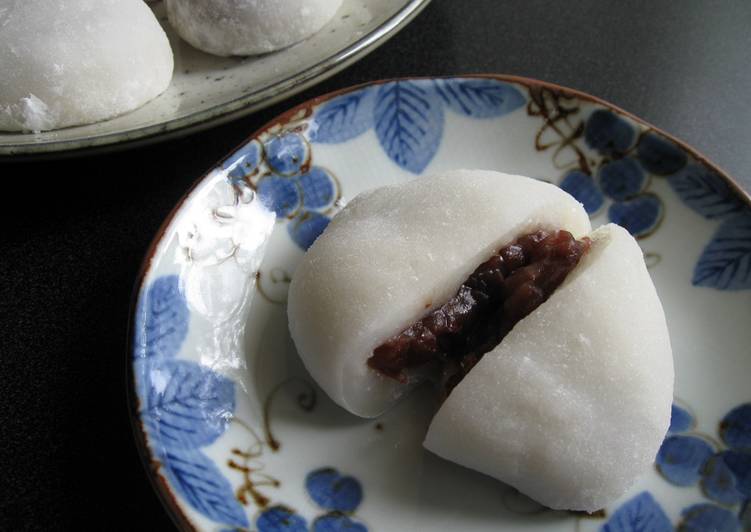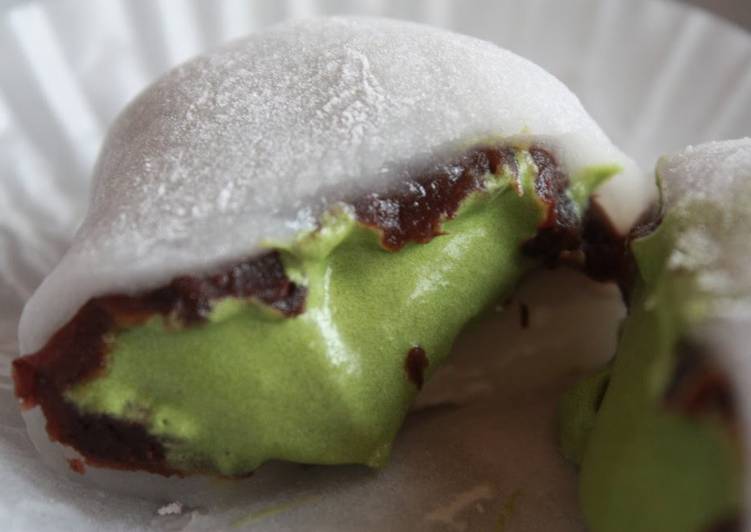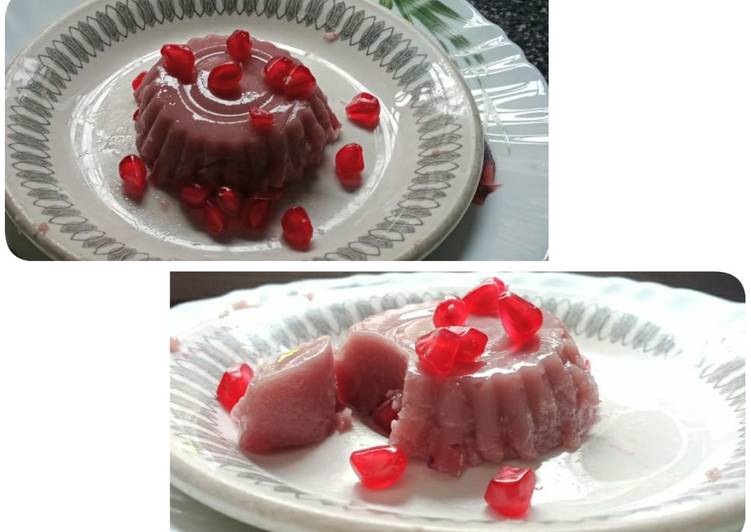
Hello everybody, I hope you are having an incredible day today. Today, we’re going to make a special dish, daifuku mochi. One of my favorites. This time, I am going to make it a little bit tasty. This will be really delicious.
Daifuku Mochi is rice cake with Anko, sweet red bean paste, inside. Daifuku Mochi is one of the most traditional but very popular Japanese sweets. Daifuku or Daifuku Mochi, is a type of wagashi, or Japanese sweet. It's a popular Japanese snack usually served with green tea.
Daifuku Mochi is one of the most favored of current trending meals on earth. It’s enjoyed by millions daily. It’s simple, it is fast, it tastes yummy. Daifuku Mochi is something which I have loved my entire life. They’re fine and they look fantastic.
To begin with this recipe, we have to first prepare a few ingredients. You can cook daifuku mochi using 6 ingredients and 9 steps. Here is how you can achieve that.
The ingredients needed to make Daifuku Mochi:
- Get 1 cup (220 g) Short Grain Glutinous Rice OR 220g Glutinous Rice Flour
- Prepare 1 cup (250 ml) Water
- Take 1 tablespoon Sugar
- Get 1 pinch Salt
- Take Potato Starch Flour to prevent Mochi to stick to hands
- Make ready 150 g ‘Azuki’ Red Bean Paste
Daifuku (大福) or Daifuku Mochi (大福餅) is a type of wagashi (和菓子), Japanese sweets. It's a small round mochi stuffed with anko (sweetened red bean paste) made from azuki beans. Daifuku is a popular Japanese snack and usually served with green tea. Watch How to Make Daifuku Mochi 大福餅の作り方 Daifukumochi (大福餅), or Daifuku (大福) (literally "great luck"), is a Japanese confection consisting of a small round mochi (glutinous rice cake) stuffed with sweet filling, most commonly anko, sweetened red bean paste made from azuki beans.
Instructions to make Daifuku Mochi:
- *Note: If you can purchase Japanese Glutinous Rice Flour, often called ‘Shiratamako’, use 220g of it and skip Process 2-3. Thai Glutinous Rice Flour can be used
- Wash Glutinous Rice and drain. Place in a bowl, add 1 cup Water and soak for 1-2 hours.
- Place the soaked Glutinous Rice and Water into a blender, and add Sugar and Salt. Process until smooth and the texture is like thick cream. Transfer the mixture to a heat-proof bowl.
- Alternatively, mix 220g Glutinous Rice Flour, 1 cup (250ml) Warm Water, Sugar and Salt in a heat-proof bowl.
- Cover the bowl with a plate, heat in the microwave for 1 minute, stir well with a wet spatular, and heat 2 more minutes or until the mixture is cooked through. When the colour becomes slightly transparent (not white), it is cooked. - *IMPORTANT: As the mixture is very sticky, wet the spatular with hot water frequently and sprinkle some hot water over the mixture as you stir.
- Spread plenty of Potato Starch on a large plate, using a wet spatular, take the thick and sticky ‘Mochi’ mixture onto the plate. Sprinkle extra Potato Starch Flour over the ‘Mochi’ as well. Set aside, because it is still too hot to handle.
- Roll a heaped teaspoon of Azuki paste into a ball. Make 10 balls.
- Remove excess Potato Starch from Mochi and divide into 10 portions.
- Flatten one portion of ‘Mochi’ and place one ball of Azuki paste in centre and draw the edges up to enclose. Repeat with the remaining ‘Mochi’ and Azuki paste.
Daifuku is a popular Japanese snack and usually served with green tea. Watch How to Make Daifuku Mochi 大福餅の作り方 Daifukumochi (大福餅), or Daifuku (大福) (literally "great luck"), is a Japanese confection consisting of a small round mochi (glutinous rice cake) stuffed with sweet filling, most commonly anko, sweetened red bean paste made from azuki beans. Daifuku is a popular wagashi in Japan, and often served with green tea. For those unfamiliar, Daifuku or Daifuku Mochi consists mochi (a Japanese rice cake made with glutinous rice flour) on the outside, and sweet red bean paste on the inside. It's a type of wagashi (Japanese sweets), a popular delightful and cute Japanese treat.
So that’s going to wrap this up with this exceptional food daifuku mochi recipe. Thank you very much for reading. I am sure that you will make this at home. There is gonna be more interesting food at home recipes coming up. Remember to save this page in your browser, and share it to your family, friends and colleague. Thanks again for reading. Go on get cooking!

